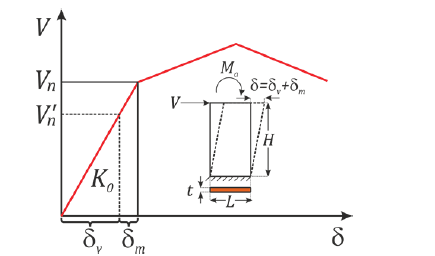1 PhD. Student, Instituto de Ingeniería de la UNAM, Av. Universidad 3000, Ciudad Universitaria, CP 04510, México, D.F., AManzanoT@iingen.unam.mx
2 Researcher, Instituto de Ingeniería de la UNAM, Av. Universidad 3000, Ciudad Universitaria, CP 04510, México, D.F., JPerezGavilanE@iingen.unam.mx
ABSTRACT
Using as a priori hypothesis that drift is the main cause of first inclined cracks due to tension, a cracking shear strength prediction for earthquake resistance confined masonry walls is proposed as a function of flexural moment on its top. The prediction is relative to the nominal cracking shear strength when no flexural moment is present on top of the wall. To verify the developed expression, an experimental program was conducted in which four full-scale confined masonry walls were tested, two of the m using hand-made solid clay bricks and two using extruded clay multi-perforated bricks. The first wall of each set, subjected to cyclic lateral loads only, was used as reference. The second wall in each set was loaded with cyclic shear force and flexural moment. A reduction of the cracking shear force was observed in the second wall as expected and in good agreement with the prediction. Other observed differences are also described.
KEYWORDS: confined masonry, interaction, shear strength, flexure, predicted strength, masonry walls
323.pdf



